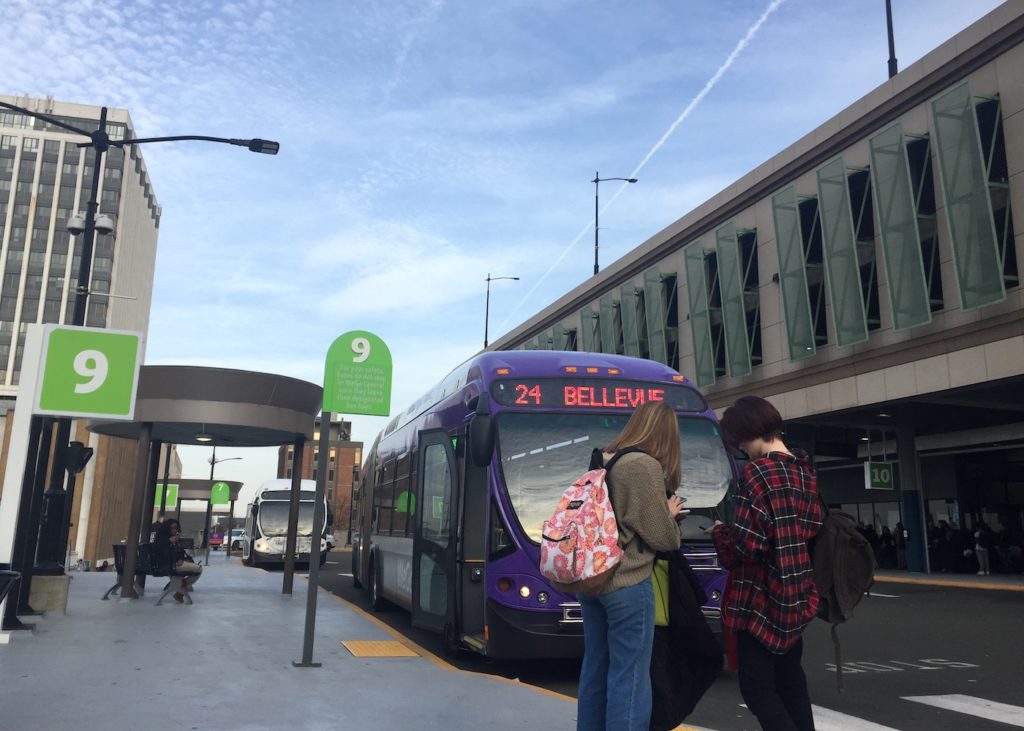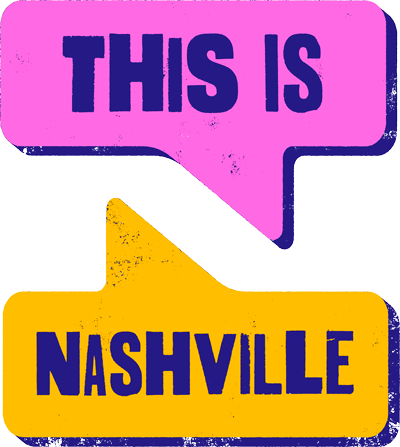
Driving a personal vehicle is the main way to travel in Nashville, but residents would still like to see the city invest in public transit, sidewalks, bike lanes and other modes of transportation.
On Wednesday, This Is Nashville invited Cathy Carrillo, education and engagement manager at Walk Bike Nashville, and Transit Alliance of Middle Tennessee CEO Jessica Dauphin to answer listener questions about the current state of public transportation and infrastructure. You can listen to the full episode about public transportation here.
This Is Nashville Host Khalil Ekulona: The Metro budget was recently passed. In an episode last week, a few of our guests talked about how budgets reflect a city’s priorities. How did public transportation fare in this budget?
Jessica Dauphin: The mayor’s budget proposed just under $63 million (for WeGo), and the (Metro) Council wound up taking $1 million away from WeGo to put towards priorities in MNPS, which was needed. While it’s not the end of the world to have a $1 million cut, I would say that it’s indicative and illustrative of the struggles that WeGo has in terms of getting in a reliable funding stream in order to get those more frequent (bus) routes and … even trying to get to a light rail or bus rapid transit.
 KE: Is this budgetary shifting the main source of frustration for WeGo’s development, in your opinion?
KE: Is this budgetary shifting the main source of frustration for WeGo’s development, in your opinion?
JD: It is one of the main ones. How can we plan on building better infrastructure for mobility if we can’t plan on what we’re going to have in the budget next year?
KE: Funding is something you talk about in your work with the Transit Citizen Leadership Academy. What’s the goal of that academy?
JD: The goal of the academy is to give participants the tools, resources and network to move the needle on this particular issue. … (WeGo is) doing a great job with the funding that they receive. But to look into the future and to build better infrastructure for mobility, we have got to seriously look at our budgeting and dedicated funding sources. By the way, Nashville is one of the last — if not the last — larger city without dedicated funding for transit.
KE: Do you think Nashville is a car town?
JD: I don’t want to demonize a particular mode of transportation. That’s not the point, because we want road safety for all users. We just want a better network of multi-modal transportation, including buses, bike lanes and sidewalks, crosswalks; and that to be able to get back and forth from your home or wherever to the bus and then back again. So you’ve got to have that intermediary space that’s safe to get there and back.
Cathy Carrillo: For as long as I’ve lived here it’s been a car town. The reality of how the city has been set up and the infrastructure, it’s been a car town for me. I think we have seen the way other big cities have grown and how they prioritize public transportation and different modes of transportation, and we have not seen that same development happen in Nashville.
town for me. I think we have seen the way other big cities have grown and how they prioritize public transportation and different modes of transportation, and we have not seen that same development happen in Nashville.
KE: How can people who do own cars take better advantage of the bus system?
CC: I think it starts with understanding that a lot of times the stigma has to do with class and has to do with who’s taking the bus system. The reality of it is that we have to look beyond that, right? We can’t live with this idea that it’s just poor people that use the bus. It’s just people that have DUIs that use a bus. There’s this constant criminalization, there’s constant association with lack of money, lack of resources that goes along with using the bus.
I think that one of the greatest opportunities that we’ve had recently is the development of the new soccer stadium and the understanding that because there’s lack of parking, you have to find different ways to access these resources or these entertainment options. All of a sudden now the conversation of buses and the conversation of bicycles and of sidewalks is coming into that mainstream venue of like, ‘Well, I want to get to a game.’ Well, it’s not just about the game. It’s about how you get to work, how you get to the library, how you get to your doctor’s appointment, how you get to anything, and putting yourselves in that (mindset) of that culture shift, that has to happen in order for us to say, ‘You know what, we’re going to do what’s best, not just for our wallets, because gas is expensive. Not just what’s best for our health, because all that car use does affect our air quality and not just what’s best for myself or what’s best for our community.’
KE: So we’ve been soliciting questions and comments from the community about public transit. John Ruben Medina is a bus rider who wrote in asking for more consistent bus schedules. Jessica, what would that take?
JD: This is what the up-and-down roller coaster budget process presents to us. It undermines trust from the riders because you get a good year and you can beef up service and then you get a bad year. For instance, a few years ago, the budget was cut $20 million. So then you have to cut some service or re-route some service, and then you lose riders that way. I can draw the straight line back to funding. If we had more reliable funding, like dedicated funding sources, then we would know how to arrange the services (so) that we that wouldn’t undermine trust but would build trust for riders.
KE: How far does our public transit go?
JD: It reaches pretty far out. I know our paratransit service from WeGo goes county line to county line, which they’re not mandated for that. They do that because they want to provide a good and reliable service for those who need paratransit. The fixed route services … I can’t quote you the miles out. I know that we do also have RTA, the regional transit authority, and it goes to Dickson and Murfreesboro, Springfield, Franklin — those are the express buses that go out into the region and come back, including the WeGo Star that goes out to Lebanon and back.
KE: Our listener Samuel Ruiz, wrote: “The main thing that I would love to see is a dedicated bike lane network where bike lanes are separated from the road and raised up like a sidewalk. Just painting a line on a large road meant for cars going 40, 50 mph is way too dangerous.” Walk Bike Nashville looked into traffic volume and speed back in 2020. What did you find?
CC: So what we found was that there were a lot of what we call “arterials” in which the traffic speeds are still 40 and 50 (mph). These are the same roads that have “sharrow” — where cars and bikes have to share the same road. … If you have a speed limit where a car is allowed to go 40 or 50 (mph) on that same road where a cyclist is only able to go maybe 10-15 mph, you obviously have just the perfect recipe for disaster.
We see that the city and Nashville Department of Transportation is doing a lot of work by sharing their Vision Zero plan, sharing their WalknBike Plan about all of these new projects that are going to come. And we know that there’s going to be bike lanes on Woodland. There’s going to be bike lanes on 8th Avenue. Like all of these projects that we had dreamed of years ago are happening. But the question still remains: What is going to happen on the outskirts? What about South Nashville? What about North Nashville? What about Madison? What about all these places where we know are high-injury networks, right, where we know that these pedestrian and cyclist deaths are occurring? Why are we prioritizing more recreational areas in our city instead of the areas where we know that traffic for pedestrians and cyclists is?
We should be putting up, like our listener said, raised areas. We should be putting up more lanes, we should be enforcing slower speed rates. And I think that that’s such a controversial conversation when people talk about lowering speeds and it’s because people think, ‘Oh, that’s just going to cause more traffic.’ Well, it’s less cars and there’s less traffic and you go ride your bike. Then you don’t have to sit in traffic and you can sit and ride that bike lane all the way down.
KE: What do we need to do to make this a truly bikeable city?
CC: This goes back to that conversation of the budget. We need to be talking about how much money is going into infrastructure. We need to be talking about how we are getting involved in our own communities … and talking to our own council people about how we want to see lower speed limits in these areas for the protection of people. …
It’s a mentality. We have to change our mentality on how we get involved among each other, because it’s not just about me sitting in traffic each and every day. It’s about who’s sitting next to me. It’s about the family that lives next to me. It’s about the neighbor that has to walk because they can’t afford a car. It’s about the coworker that has to ride the bus. It’s about the cyclist that needs the fresh air. It’s about the kids that need the routes to school so that their parents can feel safe sending them walking to school. It’s about all of that, and it starts with a change in mentality. Then finding a local organization like Walk Bike Nashville, like the Transit Alliance to get involved in and step in and say, ‘OK, now how can I take the next step and use my voice?’
KE: Jessica, do you feel like our public officials are truly invested in upgrading public transit?
JD: Some of them are more invested than others, of course. What it really takes … is for folks to get involved in, for advocacy, to start really sounding the alarm that this is critical to to our to enhance our personal quality of life. I gave a TEDx and in it I say that individual freedoms are directly tied to mobility. I shouldn’t be stuck at home because I don’t have my own car.


